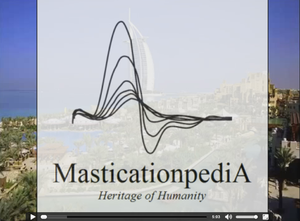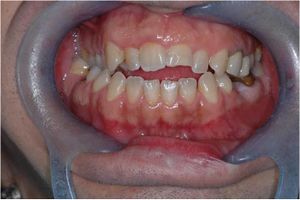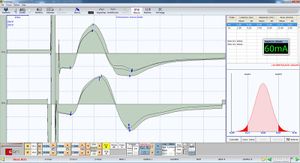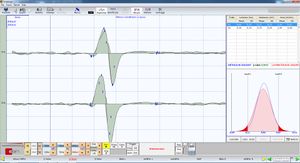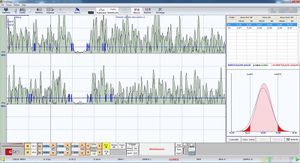Difference between revisions of "Introduction/ar"
Gianfranco (talk | contribs) (Created page with "يشير المصطلح على وجه التحديد إلى ذلك الجزء من علم الغنوص الذي يدرس أسس وصحة وحدود المعرفة العلمي...") |
(Updating to match new version of source page) |
||
| (26 intermediate revisions by 2 users not shown) | |||
| Line 1: | Line 1: | ||
| − | {{ | + | {{Bookind2}} |
| − | + | ||
<languages /> | <languages /> | ||
| Line 133: | Line 133: | ||
"" نظرية المعرفة "" (من اليونانية ἐπιστήμη ، "epistème" ، "معرفة معينة" أو "علم" ، و λόγος ، "لوغوس" ، "خطاب") هو ذلك الفرع من الفلسفة الذي يتعامل مع الشروط التي يمكن في ظلها الحصول على المعرفة العلمية وطرق تحقيق هذه المعرفة.<ref>يُعتقد أن المصطلح قد صاغه الفيلسوف الاسكتلندي جيمس فريدريك فيرير في كتابه `` معاهد الميتافيزيق '' (p.46), of 1854; ارى Internet Encyclopedia of Philosophy, ''[https://www.iep.utm.edu/ferrier/ James Frederick Ferrier (1808—1864)]''. [[:wikipedia:James Frederick Ferrier|Wikipedia]]</ref> يشير المصطلح على وجه التحديد إلى ذلك الجزء من علم الغنوص الذي يدرس أسس وصحة وحدود المعرفة العلمية. في البلدان الناطقة باللغة الإنجليزية ، يتم استخدام مفهوم نظرية المعرفة بشكل أساسي كمرادف لعلم الغنوص أو نظرية المعرفة - النظام الذي يتعامل مع دراسة المعرفة. | "" نظرية المعرفة "" (من اليونانية ἐπιστήμη ، "epistème" ، "معرفة معينة" أو "علم" ، و λόγος ، "لوغوس" ، "خطاب") هو ذلك الفرع من الفلسفة الذي يتعامل مع الشروط التي يمكن في ظلها الحصول على المعرفة العلمية وطرق تحقيق هذه المعرفة.<ref>يُعتقد أن المصطلح قد صاغه الفيلسوف الاسكتلندي جيمس فريدريك فيرير في كتابه `` معاهد الميتافيزيق '' (p.46), of 1854; ارى Internet Encyclopedia of Philosophy, ''[https://www.iep.utm.edu/ferrier/ James Frederick Ferrier (1808—1864)]''. [[:wikipedia:James Frederick Ferrier|Wikipedia]]</ref> يشير المصطلح على وجه التحديد إلى ذلك الجزء من علم الغنوص الذي يدرس أسس وصحة وحدود المعرفة العلمية. في البلدان الناطقة باللغة الإنجليزية ، يتم استخدام مفهوم نظرية المعرفة بشكل أساسي كمرادف لعلم الغنوص أو نظرية المعرفة - النظام الذي يتعامل مع دراسة المعرفة. | ||
| − | + | بالمناسبة ، تظل المشكلة الأساسية لنظرية المعرفة اليوم ، كما في زمن هيوم ، مشكلة قابلية التحقق.<ref>[[:wikipedia:David Hume|David Hume]] (ادنبره, 7 قد 1711 – ادنبره, 25 شهر اغسطس 1776) كان فيلسوفًا اسكتلنديًا. يعتبر ثالث وربما الأكثر تطرفا بين التجريبيين البريطانيين ، بعد الإنجليزي جون لوك والأنجلو إيرلندي جورج بيركلي.</ref><ref>{{cita libro | |
| autore = Srivastava S | | autore = Srivastava S | ||
| titolo = Verifiability is a core principle of science | | titolo = Verifiability is a core principle of science | ||
| Line 148: | Line 148: | ||
}}</ref> | }}</ref> | ||
| − | + | تخبرنا مفارقة همبل أن كل بجعة بيضاء مبصرة تؤكد أن الغربان سوداء<ref>من الواضح أننا نشير هنا إلى المفارقة المعروفة المعروفة باسم "الغربان" ، أو "الغربان السوداء" ، التي صاغها الفيلسوف وعالم الرياضيات [[:wikipedia:Carl Gustav Hempel|Carl Gustav Hempel]], شرح أفضل في مقال ويكيبيديا ''[https://en.wikipedia.org/w/index.php?title=Raven_paradox&oldid=942633026 Raven paradox]'':<br>ارى {{cita libro | |
|autore = Good IJ | |autore = Good IJ | ||
|titolo=The Paradox of Confirmation | |titolo=The Paradox of Confirmation | ||
| Line 155: | Line 155: | ||
|numero=42 | |numero=42 | ||
|url=https://www.jstor.org/stable/685588 | |url=https://www.jstor.org/stable/685588 | ||
| − | |anno = 1960|pag=145-149}}</ref>; | + | |anno = 1960|pag=145-149}}</ref>; أي أن "كل مثال لا يتعارض مع النظرية يؤكد جزءًا منه":<br> |
::<math>A\Rightarrow B = \lnot A \lor B</math> <br> | ::<math>A\Rightarrow B = \lnot A \lor B</math> <br> | ||
| − | + | وفقًا لاعتراض القابلية للتزوير ، بدلاً من ذلك ، لا توجد نظرية صحيحة على الإطلاق لأنه ، في حين لا يوجد سوى عدد محدود من التجارب المؤيدة ، يوجد أيضًا نظريًا عدد لا حصر له يمكن أن يزيفها.<ref>{{cita libro | |
| autore = Evans M | | autore = Evans M | ||
| titolo = Measuring statistical evidence using relative belief | | titolo = Measuring statistical evidence using relative belief | ||
| Line 174: | Line 174: | ||
}}</ref> | }}</ref> | ||
| − | {{qnq| | + | {{qnq|لكن الأمر ليس واضحًا تمامًا ...}} |
| − | ... | + | ... لأن مفهوم نظرية المعرفة يلتقي بالتطبيقات المستمرة ، كما هو الحال في الطب: |
{| | {| | ||
|- | |- | ||
| | | | ||
| − | *'''''<math>P-value</math>''''': <br> | + | *'''''<math>P-value</math>''''': <br>في الطب ، على سبيل المثال ، لتأكيد تجربة ما ، يتم استخدام سلسلة من البيانات الواردة من أدوات معملية أو من الدراسات الاستقصائية ، "" الاستدلال الإحصائي "، وعلى وجه الخصوص قيمة مشهورة تسمى" اختبار الأهمية " (P-value). حسنًا ، حتى هذا المفهوم ، الذي أصبح الآن جزءًا من نشأة الباحث ، يتذبذب. في دراسة حديثة ، تم التركيز على "حملة" أجريت على "الطبيعة" ضد مفهوم "اختبارات الأهمية"<ref>{{cita libro |
| autore = Amrhein V | | autore = Amrhein V | ||
| autore2 = Greenland S | | autore2 = Greenland S | ||
| Line 196: | Line 196: | ||
| DOI = 10.1038/d41586-019-00857-9 | | DOI = 10.1038/d41586-019-00857-9 | ||
| OCLC = | | OCLC = | ||
| − | }}</ref>.<br /> | + | }}</ref>.<br />مع وجود أكثر من 800 موقع يدعمون علماء مهمين ، يمكن اعتبار هذه "الحملة" معلمًا هامًا و "ثورة صامتة" في الإحصائيات المتعلقة بالجوانب المنطقية والمعرفية<ref>{{cita libro |
| autore = Rodgers JL | | autore = Rodgers JL | ||
| titolo = The epistemology of mathematical and statistical modeling: a quiet methodological revolution | | titolo = The epistemology of mathematical and statistical modeling: a quiet methodological revolution | ||
| Line 236: | Line 236: | ||
| DOI = | | DOI = | ||
| OCLC = | | OCLC = | ||
| − | }}</ref>. | + | }}</ref>. تنتقد الحملة التحليلات الإحصائية المبسطة للغاية التي لا يزال من الممكن العثور عليها في العديد من المنشورات حتى الآن.<br>أدى هذا في النهاية إلى مناقشة برعاية الجمعية الإحصائية الأمريكية ، والتي نتج عنها إصدار خاص من "رابطة الإحصائيين الأمريكية" بعنوان "" الاستدلال الإحصائي في القرن الحادي والعشرين: عالم ما بعد p <0،05 "" ، يحتوي على 43 مقالاً من قبل الإحصائيين المتطلعين إلى المستقبل<ref name="wasser">{{cita libro |
| autore = Wasserstein RL | | autore = Wasserstein RL | ||
| autore2 = Schirm AL | | autore2 = Schirm AL | ||
| Line 251: | Line 251: | ||
| DOI = 10.1080/00031305.2019.1583913 | | DOI = 10.1080/00031305.2019.1583913 | ||
| OCLC = | | OCLC = | ||
| − | }}</ref>. | + | }}</ref>. يقترح السؤال الخاص طريقتين جديدتين للإشارة إلى أهمية نتائج البحث التي تتجاوز الحد التعسفي للقيمة P ، وبعض الإرشادات لإجراء البحث: يجب على الباحث قبول عدم اليقين ، وأن يكون انعكاسًا ، ومنفتحًا ومتواضعًا في تصريحاته.<ref name="wasser" />. سيُظهر المستقبل ما إذا كانت تلك المحاولات لدعم العلوم إحصائيًا بشكل أفضل بما يتجاوز اختبارات الأهمية ستنعكس في المنشورات المستقبلية أم لا<ref>{{cita libro |
| autore = Dettweiler Ulrich | | autore = Dettweiler Ulrich | ||
| titolo = The Rationality of Science and the Inevitability of Defining Prior Beliefs in Empirical Research | | titolo = The Rationality of Science and the Inevitability of Defining Prior Beliefs in Empirical Research | ||
| Line 344: | Line 344: | ||
Before proceeeding, it could be appropriate to observe a very concrete and significant case. | Before proceeeding, it could be appropriate to observe a very concrete and significant case. | ||
| − | == | + | ==سوء الإطباق== |
| − | '' | + | ''سوء الإطباق'': تعني حرفياً إغلاق الأسنان بشكل سيء (باللاتينية "malum")<ref>The creation of the term is generally attributed to Edward Angle, considered the father of modern orthodontics, who coined it as a specification of ''occlusion'' to signal the incorrect opposition in closing of the lower teeth and upper, especially the first molar ([[:wikipedia:Edward Angle|Wikipedia]]); see {{cita libro |
| autore = Gruenbaum T | | autore = Gruenbaum T | ||
| titolo = Famous Figures in Dentistry | | titolo = Famous Figures in Dentistry | ||
Latest revision as of 16:10, 20 January 2022
نود أن يكون لدى القارئ تصور فوري للموضوعات التي ستتم مناقشتها في 'Masticationpedia' '؛ سنراجع بعضًا من أحدث القضايا المتعلقة بالتطور المعرفي للعلم بشكل عام ، والطب وكذلك طب الأسنان بشكل خاص.
يمكنك أيضًا مشاهدة فيديو خاص بنا على Youtube ، من أجل راحتك
المقدمة
في هذه المرحلة سننظر في الجانبين الأساسيين لـ "تقدم العلوم" ، وفقًا لـ "نماذج كون" و "نظرية المعرفة" التي تتساءل عن مفاهيم "الاستدلال الإحصائي" و "تداخل التخصصات".
هذان الموضوعان ، اللذان يبدو أنهما يتعارضان مع بعضهما البعض ، حيث يحتاج الأول إلى "الانضباط" لتسليط الضوء على "الحالات الشاذة في النموذج" والاحتياجات الثانية "" تداخل التخصصات "" ، سوف يتكاملان من خلال عنصر حل يتكون من "" سقالات ما وراء المعرفية "" ، أي الجسور المعرفية بين التخصصات المتخصصة. في هذا السياق ، سيكون القارئ أكثر قدرة على تقدير "النهج العشوائي" تجاه أحد أكثر الموضوعات إثارة للجدل في إعادة تأهيل المضغ ، مثل "" سوء الإطباق "" ، الذي يأتي منه معظم إجراءات إعادة التأهيل بالمضغ مثل تقويم الأسنان والأطراف الاصطناعية وجراحة تقويم الفكين.
لذلك ، بالإضافة إلى توقع الجانب العلمي والفلسفي لـ Masticationpedia ، سنركز أخيرًا على موضوعات مثل "الأنظمة المعقدة" و "السلوك الناشئ" للأنظمة المعقدة و "تماسك النظام": الخطوات اللازمة لتقديم الموضوعات السريرية العلمية التي تجلب معهم شكوك وأسئلة وفي نفس الوقت ابتكارات نموذجية تميل إلى تغيير الوضع الراهن للتفكير الإكلينيكي الحتمي والاختزال "الروتيني" ، قبل منطق اللغة العشوائية ومتعدد التخصصات.
Article by Gianni Frisardi
|
Ab ovo[1]
قبل الوصول إلى قلب علاج Masticationpedia ، من المناسب تقديم فرضية تتعلق بشكل أساسي بجانبين من الواقع الاجتماعي والعلمي والسريري للحقبة الحالية والسابقة مباشرة.
في القرن الماضي ، شهدنا نموًا هائلاً في "الابتكارات" التكنولوجية والمنهجية على وجه التحديد في طب الأسنان[2]; لقد أثرت هذه الابتكارات بطريقة ما على استراتيجيات صنع القرار والآراء والمدارس الفكرية والبديهيات من أجل تحسين نوعية الحياة ، كما هو مذكور في "" الكشف عن العلوم في القرن الحادي والعشرين ""[3]. ومع ذلك ، فإن هذا النمو الأسي يجلب معه ، ضمنيًا ، مناطق رمادية مفاهيمية (من الناحية العملية "آثار جانبية") يتم التقليل من شأنها أحيانًا ، ولكنها قد تثير التساؤل عن بعض اليقين العلمي أو تجعلها أقل مطلقة وأكثر احتمالية.[4]
الجانبان الحساسان للواقع الاجتماعي والعلمي والسريري الحالي (اللذان يبدو أنهما يتعارضان مع بعضهما البعض ، ولكن كما سنرى في نهاية هذه القراءة ستكون مكملتان) هما "تقدم العلم" وفقًا لكون و " نظرية المعرفة".
تقدم العلم حسب توماس كون
Thomas Kuhn يذكر في أشهر أعماله أن "العلم يمر دوريًا ببعض المراحل التي تدل على عمله".[5][6] وفقًا لكون ، "العلم نموذجي" ، ويمكن إرجاع الترسيم بين العلم والعلم الزائف إلى وجود "نموذج". يتم استيعاب تطور التقدم العلمي في "منحنى مستمر يخضع للانقطاع في التغييرات النموذجية". على سبيل المثال ، في المرحلة الثانية من نماذج كون ، المسماة "العلوم العادية" ، يُنظر إلى العلماء على أنهم يحلون المشكلات ، ويعملون على تحسين الاتفاق بين النموذج والطبيعة.
هذه المرحلة ، في الواقع ، تقوم على مجموعة من المبادئ الأساسية التي يمليها النموذج ، والتي لم يتم التشكيك فيها ولكنها ، في الواقع ، مكلفة بمهمة تحديد إحداثيات الأعمال القادمة. في هذه المرحلة ، يتم تطوير أدوات القياس التي يتم إجراء التجارب بها ، ويتم إنتاج معظم المقالات العلمية وتشكل نتائجها نموًا كبيرًا في المعرفة العلمية. في المرحلة العلمية العادية سيتم تحقيق كل من النجاحات والفشل ؛ يُطلق على الإخفاقات اسم "شذوذ" أو "أحداث تتعارض مع النموذج".
كحل جيد للمشاكل ، يحاول العالم حل هذه الحالات الشاذة.
Kuhn's phases in Dentistry
ومع ذلك ، يقسم كون تطور النموذج إلى "خمس مراحل" ؛ هذه عملية أساسية لـ Masticationpedia ، ولكن لمواكبة المشروع ، سنقتصر على وصف أهم مرحلتين:
| |
|
يكاد يكون من الواضح أن الفلسفة العلمية الكونية تفضل الانضباط ، حيث إن الشذوذ في النموذج الجينومي سوف يلاحظه عالم الوراثة بشكل أفضل من اختصاصي فيزيولوجيا الأعصاب. الآن يبدو أن هذا المفهوم يتناقض مع التطور المعرفي للعلم ، لذلك من الأفضل التوقف دقيقة عنه بالتفصيل.
نظرية المعرفة
| ترمز البجعة السوداء إلى إحدى المشاكل التاريخية لنظرية المعرفة: إذا كانت كل البجعات التي رأيناها حتى الآن بيضاء ، فهل يمكننا أن نقرر أن كل البجعات بيضاء؟ حقا؟ |
|
| استخدم كوهن الوهم البصري ليوضح كيف يمكن أن يتسبب التحول في النموذج في أن يرى الشخص نفس المعلومات بطريقة مختلفة تمامًا: ما هو الحيوان الموجود هنا جانبًا؟ بالتأكيد؟ |
"" نظرية المعرفة "" (من اليونانية ἐπιστήμη ، "epistème" ، "معرفة معينة" أو "علم" ، و λόγος ، "لوغوس" ، "خطاب") هو ذلك الفرع من الفلسفة الذي يتعامل مع الشروط التي يمكن في ظلها الحصول على المعرفة العلمية وطرق تحقيق هذه المعرفة.[7] يشير المصطلح على وجه التحديد إلى ذلك الجزء من علم الغنوص الذي يدرس أسس وصحة وحدود المعرفة العلمية. في البلدان الناطقة باللغة الإنجليزية ، يتم استخدام مفهوم نظرية المعرفة بشكل أساسي كمرادف لعلم الغنوص أو نظرية المعرفة - النظام الذي يتعامل مع دراسة المعرفة.
بالمناسبة ، تظل المشكلة الأساسية لنظرية المعرفة اليوم ، كما في زمن هيوم ، مشكلة قابلية التحقق.[8][9]
تخبرنا مفارقة همبل أن كل بجعة بيضاء مبصرة تؤكد أن الغربان سوداء[10]; أي أن "كل مثال لا يتعارض مع النظرية يؤكد جزءًا منه":
وفقًا لاعتراض القابلية للتزوير ، بدلاً من ذلك ، لا توجد نظرية صحيحة على الإطلاق لأنه ، في حين لا يوجد سوى عدد محدود من التجارب المؤيدة ، يوجد أيضًا نظريًا عدد لا حصر له يمكن أن يزيفها.[11]
|
لكن الأمر ليس واضحًا تمامًا ... |
... لأن مفهوم نظرية المعرفة يلتقي بالتطبيقات المستمرة ، كما هو الحال في الطب:
|
|
P-value vs. Interdisciplinarity
Given the above, on a superficial view of the epistemic evolution of the Science, the two aspects of disciplinarity ("Physics Paradigm of Science", highlighting the anomaly) and Interdisciplinary ("Engineering Paradigm of Science", metacognitive scaffold), might seem to be in conflict with each other; in reality, however, as we are just going to see right in this chapter, they are two sides of the same coin because both tend to generate "Paradigmatic Innovation" without any conflict at all.
Now we could conclude that the "Innovations" are already "Progress of Science" in themselves, as stated in the article "Scientific basis of dentistry" by Yegane Guven, in which the effect of biological and digital revolutions is considered on dental education and daily clinical practice, such as personalized regenerative dentistry, nanotechnologies, virtual reality simulations, genomic information and stem cell studies.[21] The innovations mentioned by Guven are obviously to be considered as technological and methodological in nature; however, the Progress of Science does not move forward with this kind of Innovations, which are called "Incremental Innovations" and "Radical Innovations", but it occurs substantially through "Paradigmatic Innovations".
In the strictest sense of the phrase, "Paradigmatic Innovations" are essentially a change of thought and awareness that pervades the whole of humanity, starting from different social strata, from the Copernican scientific revolution to the current trend of Stochastic approach to the biological phenomenon[22].
In this epistemological context (in addition to other initiatives such as the Research Diagnostic Criteria in the field of the Temporomandibular Disorders — RDC/TMDs), of the Evidence Based Medicine (and other), the Masticationpedia project inserts itself in order to highlight the dialectics dynamism about the progress of the masticatory rehabilitation science. Masticationpedia tends, moreover, to highlight the anomalies that inevitably stimulate a change of thought and therefore a "Paradigmatic Innovation".
Before proceeeding, it could be appropriate to observe a very concrete and significant case.
سوء الإطباق
سوء الإطباق: تعني حرفياً إغلاق الأسنان بشكل سيء (باللاتينية "malum")[23]. The closure is easy to understand, we believe, but the epithet "bad" must be understood with care as well, because it is not as simple as it seems.
To briefly grasp the concept, in this first introductory reading we will try to present a simple but highly debatable question that involves a series of other questions in the field of masticatory rehabilitation and especially in orthodontic disciplines: what is "Malocclusion"? Bear in mind that in 2019, a Pubmed query about this term returned a result of "only" 33,309 articles[24], which says it all about the hypothetical terminological agreement on the subject; and, therefore, very meaningful conclusions could be drawn every now and then from these articles, such as the ones we reproduce in full from an article by Smaglyuk and collaborators, a somewhat "sensational" article that deals with the interdisciplinary approach in the diagnosis of malocclusions[25]:
Another noteworthy fact is that if in the same 2019 Pubmed was questioned on interdisciplinarity in the diagnosis of malocclusions, the result dropped drastically to just four articles[26].
These premises to the "Malocclusion” question indicate, on one hand, an alert about anomalies that tend to activate Kuhn phase 4 and, on the other, a bifurcation in the epistemic choice on the subject: one that generates Incremental Innovations (others 33,309 articles, perhaps) and another that prefers a new gnoseological path of "Paradigmatic Innovation”.
Let’s try to approach part of the concept that considers the "Paradigmatic Innovation” as essential, asking ourselves for example:
|
What does "Malocclusion" mean? |
We will answer this question by reporting a clinical case of evident “Malocclusion”.
Patient is with an occlusion that orthodontists call “Malocclusion” because it has a posterior unilateral crossbite and anterior openbite[27]; it is a malocclusion that can be treated with a fixed orthodontic therapy and possibly in combination with an orthognathic intervention[28]. Crossbite is another element of disturbance in normal occlusion because of which it is obligatorily treated together with the openbite[29][30][31].
It is self-evident that an observer with a deterministic mindset facing a phenomenon of such evident occlusal incongruity considers crossbite and openbite the cause of malocclusion (cause/effect) or vice versa; and it is obvious, as well, that the observer recommends an orthodontic treatment to restore a “Normocclusion”. This way of reasoning means that the model (masticatory system) is “normalized to occlusion”; and if read backwards, it means that the occlusal discrepancy is the cause of malocclusion and, therefore, of disease of the Masticatory System. (Figure 1a).
But let's hear what the two players say, the dentist and the patient, in the informative dialogue.
| The dentist tells the patient that he is suffering from severe malocclusion and that it should be treated to improve its aesthetics and chewing function. The patient, however, replies firmly: «No way, I haven't the slightest idea to do it at all, doctor, because I might even have an unrepresentative smile, but I eat very well.» The dentist’s reply is ready, so the practitioner insists by saying: «but you have a serious malocclusion with an openbite and a unilateral posterior crossbite, you should already have problems with bruxism and swallowing, as well as posture.» The patient closes the confrontation in a decisive way: «absolutely false: I chew very well, I swallow very well and at night I snore alot so I don’t grind; besides, I’m a sportsman and I don’t have any postural disturbance». |
Now the conclusion remains very critical because we might be finding ourselves in front of a verbal language of the patient which is misleading because it is not specific and does not respond to a detailed physiopathogenetic knowledge of the occlusal state; or, paradoxically, we are otherwise facing a machine language converted into verbal language which guarantees the integrity of the system. At this point the situation is truly embarrassing because neither the patient nor the observer (dentist) will be able to say with certainty that the System is in a “Malocclusion” state.
It is precisely at this moment that one remembers the criticism of the American Statistician Association titled “Statistical inference in the 21st century: A World Beyond p <0.05”, which urges the researcher to accept uncertainty, be sensible reflective, open and modest in his statements[16]: which basically translates into a search for interdisciplinarity.
Interdisciplinarity, in fact, could answer such a complex question; but it is nonetheless necessary to interpret the biological phenomenon of "“Malocclusion”" with a stochastic forma mentis of which we will discuss in detail later.
A stochastic observer may observe that there is a low probability that the patient, at the moment , is in a state of occlusal disease, as the patient's natural language indicates ideal psychophysical health; he/she then concludes that the occlusal discrepancy could not be a cause of neuromuscular and psychophysical functional disorder. In this case, therefore, the Masticatory System can not only be normalized to the occlusion only, but a more complex model is needed too, so it has to be normalized to the Trigeminal Nervous System. The patient was then served a series of trigeminal electrophysiological tests to assess the integrity of his/her Trigeminal Nervous System in these “"Malocclusion”" clinical conditions.
We can see the following output responses, which we report directly in figures 1b, 1c and 1d (with explanation in the caption, to simplify the discussion). These tests and their description by now should only be considered as “Conceptual Rationale” for the “Malocclusion” question; later they will be widely described and their analysis detailed in the specific chapters. It can already be noted in this first descriptive approach to the masticatory phenomenon that there is an evident discrepancy between the occlusal state (which at first would support the orthodoxy of classical orthodontics in considering it as “Malocclusive State”) and the neurophysiological data indicating incredible synchronization and perfect symmetry of the trigeminal reflexes.
These results can be attributed to anything less than a "malocclusion": we are obviously in front of an error of the logic Language in medicine, in this case it is in fact more appropriate to talk about...
|
Occlusal dysmorphism and not Malocclusion (which, as we shall see a little further on, is quite another thing) |
Conclusion
Even before drawing conclusions, conceptual clarity must be made on some fundamental points which of course will be treated in detail in the specific chapters of Masticationpedia.
The Masticatory System should be considered as a “Complex System”[32], not as a Biomechanical System focused exclusively on dental occlusion, because in this sense the “Occlusion” is nothing more than a subset of the Complex System interacting with the other subsets, such as periodontal receptors, neuromuscular spindles, recruitment of motor units, central nervous system, temporomandibular joint, etc., to give shape to an “Emerging Behaviour”, the masticatory one.
The peculiarity of this concept is that it is not possible to interpret or predict the “Emerging Behaviour” of a System by extracting objective data from a single subset. Instead, the integrity of the System must be quantified in its entirety, and only then can a segmentation of the whole be attempted to make an analytical description of the node itself. There are very important intellectual and scientific movements that are engaging with this issue; in this regard, the extraordinary work of Prof. Kazem Sadegh-Zadeh: Handbook of Analytic Philosophy of Medicine comes to mind.[33]
In the presented case, the question is resolved in the following language logic:
- The subsets of the Masticatory System (teeth, occlusion, Temporomandibular joints, muscles, etc.) are in a state of "Coherence” with the Central Trigeminal Nervous System (see figures 1b, 1c and 1d), so the term “Malocclusion” cannot be used, the phrase “Occlusal Dismorphism” should be considered instead.
- «This does not mean abolishing prosthetic, orthodontic and orthognathic masticatory rehabilitation treatments: on the contrary, this forma mentis tends to restore medical knowledge to dental rehabilitation disciplines, as well as offering an alternative to the scientific reductionism that converges in a deterministic interpretation of the biological phenomenon.»
Going beyond the specialist perimeters of the disciplines, as previously reported on interdisciplinarity, helps expanding the diagnostic and therapeutic models as it can be seen in the clinical Case in which a patient was treated with the OrthoNeuroGnathodontic method is reported.
In this way, an overall view of the entire Masticatory System is presented in order to gather the aesthetic and functional-neurophysiological components together to determine “Occlusal Stability” and to avoid “Relapses”, especially in orthodontic and orthognathic treatments.[34][35]
These are just some of the topics that will be covered extensively both in this chapter and in what we call “Extraordinary Science”. Meanwhile, in a fitting diversion our colourful friend Linus Sapiens, the little yellow man on the left, asks us:
(Not a trivial question, let's start talking, then, about the logic of medical language)
- ↑ لاتينية تعني "منذ البداية"
- ↑ Heft MW, Fox CH, Duncan RP, «Assessing the Translation of Research and Innovation into Dental Practice», in JDR Clin Trans Res, 2019.
DOI:10.1177/2380084419879391 - ↑ «Exposure Science in the 21st Century. A Vision and a Strategy», Committee on Human and Environmental Exposure Science in the 21st Century; Board on Environmental Studies and Toxicology; Division on Earth and Life Studies; National Research Council..
ISBN: 0-309-26468-5 - ↑ Liu L, Li Y, «The unexpected side effects and safety of therapeutic monoclonal antibodies», in Drugs Today, 2014, Barcellona.
DOI:10.1358/dot.2014.50.1.2076506 - ↑ Thomas Samuel Kuhn (Cincinnati, 18 تموز 1922 – Cambridge, 17 يونيو 1996) كان فيلسوفًا أمريكيًا للعلوم.
ارى Treccani, Kuhn, Thomas Samuel. Wikipedia, Thomas Kuhn. - ↑ Kuhn Thomas S, «The Structure of Scientific Revolutions», Univ. of Chicago Press, 2012, Chicago.
ISBN: 9780226458113 - ↑ يُعتقد أن المصطلح قد صاغه الفيلسوف الاسكتلندي جيمس فريدريك فيرير في كتابه `` معاهد الميتافيزيق (p.46), of 1854; ارى Internet Encyclopedia of Philosophy, James Frederick Ferrier (1808—1864). Wikipedia
- ↑ David Hume (ادنبره, 7 قد 1711 – ادنبره, 25 شهر اغسطس 1776) كان فيلسوفًا اسكتلنديًا. يعتبر ثالث وربما الأكثر تطرفا بين التجريبيين البريطانيين ، بعد الإنجليزي جون لوك والأنجلو إيرلندي جورج بيركلي.
- ↑ Srivastava S, «Verifiability is a core principle of science», in Behav Brain Sci, Cambridge University Press, 2018, Cambridge.
DOI:10.1017/S0140525X18000869 - ↑ من الواضح أننا نشير هنا إلى المفارقة المعروفة المعروفة باسم "الغربان" ، أو "الغربان السوداء" ، التي صاغها الفيلسوف وعالم الرياضيات Carl Gustav Hempel, شرح أفضل في مقال ويكيبيديا Raven paradox:
ارى Good IJ, «The Paradox of Confirmation», in Br J Philos Sci, 1960 – in Vol. 11. - ↑ Evans M, «Measuring statistical evidence using relative belief», in Comput Struct Biotechnol J, 2016.
DOI:10.1016/j.csbj.2015.12.001 - ↑ Amrhein V, Greenland S, McShane B, «Scientists rise up against statistical significance», in Nature, 2019.
DOI:10.1038/d41586-019-00857-9 - ↑ Rodgers JL, «The epistemology of mathematical and statistical modeling: a quiet methodological revolution», in Am Psychol, 2010.
DOI:10.1037/a0018326 - ↑ Meehl P, «The problem is epistemology, not statistics: replace significance tests by confidence intervals and quantify accuracy of risky numerical predictions», 1997. , in eds Harlow L. L., Mulaik S. A., Steiger J. H., What If There Were No Significance Tests? - editors. (Mahwah: Erlbaum, 393–425. [Google Scholar]
- ↑ Sprenger J, Hartmann S, «Bayesian Philosophy of Science. Variations on a Theme by the Reverend Thomas Bayes», Oxford University Press, 2019, Oxford.
- ↑ 16.0 16.1 16.2 Wasserstein RL, Schirm AL, Lazar NA, «Moving to a World Beyond p < 0.05», in Am Stat, 2019.
DOI:10.1080/00031305.2019.1583913 - ↑ Dettweiler Ulrich, «The Rationality of Science and the Inevitability of Defining Prior Beliefs in Empirical Research», in Front Psychol, 2019.
DOI:10.3389/fpsyg.2019.01866 - ↑ European Union, Horizon 2020
- ↑
Boon M, Van Baalen S, «Epistemology for interdisciplinary research - shifting philosophical paradigms of science», in Eur J Philos Sci, 2019.
DOI:10.1007/s13194-018-0242-4 - ↑ Boon M, «An engineering paradigm in the biomedical sciences: Knowledge as epistemic tool», in Prog Biophys Mol Biol, 2017.
DOI:10.1016/j.pbiomolbio.2017.04.001 - ↑ Guven Y, «Scientific basis of dentistry», in J Istanb Univ Fac Den, 2017.
PMID:29114433 - PMCID:PMC5624148
DOI:10.17096/jiufd.04646 - ↑ Zhao XF, Gojo I, York T, Ning Y, Baer MR, «Diagnosis of biphenotypic acute leukemia: a paradigmatic approach», in Int J Clin Exp Pathol, 2010.
PMID:19918331 - PMCID:PMC2776262 - ↑ The creation of the term is generally attributed to Edward Angle, considered the father of modern orthodontics, who coined it as a specification of occlusion to signal the incorrect opposition in closing of the lower teeth and upper, especially the first molar (Wikipedia); see Gruenbaum T, «Famous Figures in Dentistry», in Mouth – JASDA, 2010.
- ↑ Pubmed, Malocclusion
- ↑ Smaglyuk LV, Voronkova HV, Karasiunok AY, Liakhovska AV, Solovei KO, «Interdisciplinary approach to diagnostics of malocclusions (review)», in Wiad Lek, 2019.
- ↑ Pubmed, interdisciplinary diagnostics of malocclusions
- ↑ Littlewood SJ, Kandasamy S, Huang G, «Retention and relapse in clinical practice», in Aust Dent J, 2017.
DOI:10.1111/adj.12475 - ↑ Reichert I, Figel P, Winchester L, «Orthodontic treatment of anterior open bite: a review article--is surgery always necessary?», in Oral Maxillofac Surg, 2014.
DOI:10.1007/s10006-013-0430-5 - ↑ Miamoto CB, Silva Marques L, Abreu LG, Paiva SM, «Impact of two early treatment protocols for anterior dental crossbite on children’s quality of life», in Dental Press J Orthod, 2018.
- ↑ Alachioti XS, Dimopoulou E, Vlasakidou A, Athanasiou AE, «Amelogenesis imperfecta and anterior open bite: Etiological, classification, clinical and management interrelationships», in J Orthod Sci, 2014.
DOI:10.4103/2278-0203.127547 - ↑ Mizrahi E, «A review of anterior open bite», in Br J Orthod, 1978.
- ↑ Complex system in Wikipedia
- ↑ Sadegh-Zadeh Kazem, «Handbook of Analytic Philosophy of Medicine», Springer, 2012, Dordrecht.
ISBN: 978-94-007-2259-0
DOI:10.1007/978-94-007-2260-6 - ↑ Al-Moraissi EA, Wolford LM, «Is Counterclockwise Rotation of the Maxillomandibular Complex Stable, Compared With Clockwise Rotation, in the Correction of Dentofacial Deformities? A Systematic Review and Meta-Analysis», in J Oral Maxillofac Surg, 2016.
DOI:10.1016/j.joms.2016.06.001 - ↑ Hoffmannová J, Foltán R, Vlk M, Klíma K, Pavlíková G, Bulik O, «Factors affecting the stability of bilateral sagittal split osteotomy of a mandible», in Prague Med Rep, 2008.
PMID:19537679
particularly focusing on the field of the neurophysiology of the masticatory system
